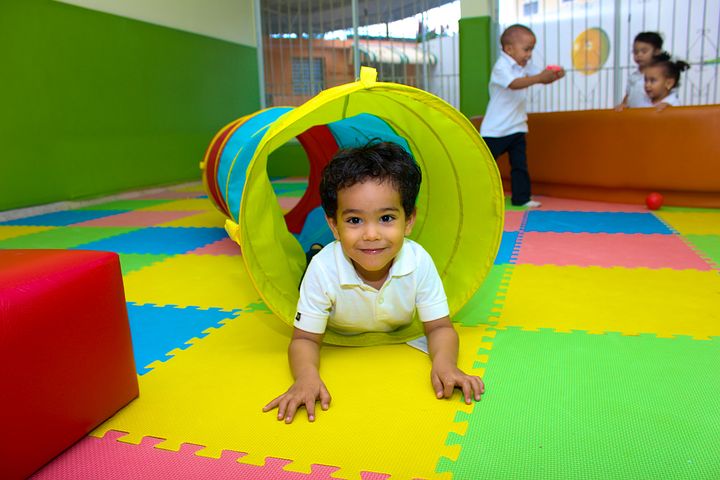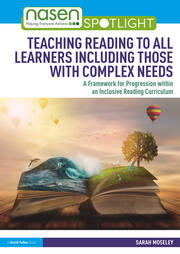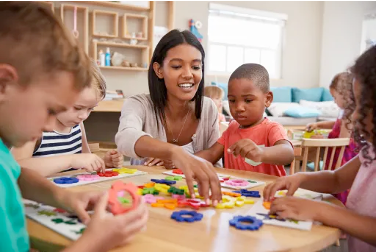How do we support children with autism and complex needs in the early years?
Are you an Early Years teacher or teaching assistant?
Do you have children in your class that you are struggling to engage or understand their needs? Do you think they might be autistic or have other SEND needs that you are not qualified to diagnose?
Are you struggling with the slow pace of getting help and assessments for some children? Are there not enough hours in the day to work out how to adapt your teaching for such a variety of needs?
We have been privileged to work alongside many EYS teachers over the years and here myself and Alison Pettitt, our EYS autism specialist discuss some of the ways that every non-specialist teacher can build in teaching and learning activities for children who may be autistic.
Lynn to Alison: What have you noticed this year as you work with a number of mainstream EYS teachers?
There seems to be a big increase in the number of children with more complex needs going into mainstream classes with no assessments or support that maybe before lockdown would have been given a special school placement or have at least an EHCP in place from the EYS team. Now, many schools have several pupils per class who present with neurodiverse thinking patterns, with many also having developmental delay, communication difficulties and problems with attention and learning. Conditions are challenging in schools with budget cuts and increased pressure on staff.
And yet I am seeing children being supported in imaginative ways every day, and progress being made along each child’s incredible journey. A pupil who started the school year with no communication tools presented with troubling behaviours which have diminished rapidly as he had discovered how to get his message across. He has found a love of books, sharing these with trusted adults many times a day. Another child who accesses others through Intensive Interaction has been able to enjoy relationships with his peers as they have naturally used these techniques themselves, having seen how his Teaching Assistant communicated with him.
What can teaching staff do to start to help these children?
The mindset of staff has an enormous effect on how pupils fare. I see schools that are warm and accepting of difference, keen to bend and learn about how to meet the child where they are. Our SEND pupils often learn in a different way, and therefore need alternative styles of teaching to their peers. They may not learn fast, or sequentially, but schools that can appreciate the child’s progress simply for what it is, rather than comparative to others, are more likely to feel positive about what they are achieving.
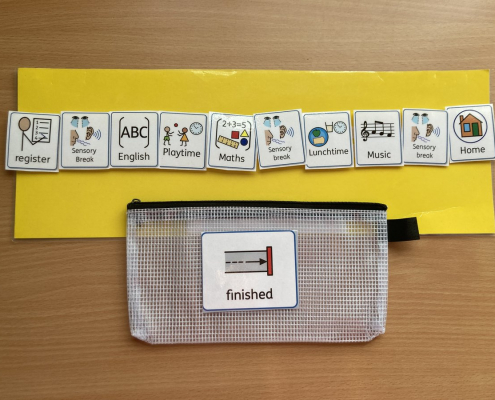
A visual timetable with finished pocket
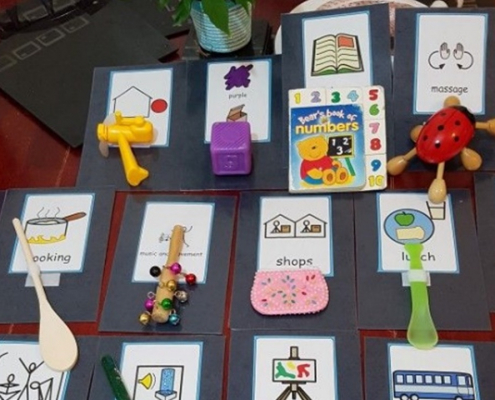
Objects of Reference examples from https://www.seirrah-ot.co.uk/alternative-approaches-to-support-early-language-skills/
What resources do you recommend that make the most difference?
Always the staff, the adults on the ground. People who can tune into the child and support them positively, calmly and consistently are extremely valuable.
Personalised timetables for individual pupils can be effective if they are struggling with long periods of continuous provision or are unable to access longer verbal input on the carpet. Many autistic children that I see benefit from short, structured sessions interspersed with physical or sensory breaks. This can help them stay regulated, as the busy Early Years setting can be overstimulating and tricky for some. These timetables should aim to allow the child to access the main classroom for spells, and do other activities such as small music groups, language sessions or individual tasks in a breakout room.
Many classes create workstations within their settings. These can be used as “hot desks” so that other children can also use this space at different times of day. I know of one little boy who really struggled within Continuous Provision and was running around putting everything in his mouth, causing real concern. Once he got his work area he felt so much calmer, and disliked leaving it! Creating order within a busy space can really help.
Visual supports need to be used in a bespoke way with individuals. Some benefit from Objects of Reference, others photos or symbols. Now / Next boards can be very useful, as can half day visual timetables. Find out what works best for your pupils, as each child will need something personal to them. The most important thing with visuals is make sure they are used consistently by staff, and carried wherever the child goes.
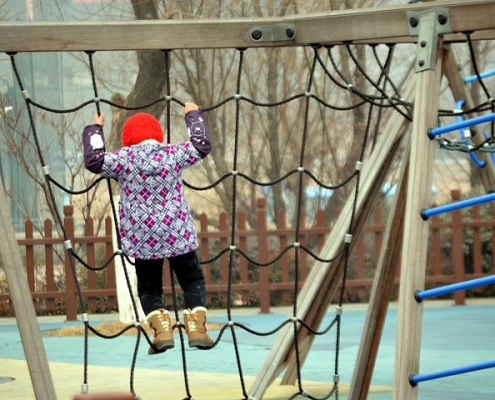
I’ve seen you introduce some fun learning activities that those who cannot access the usual activities in the classroom, have really engaged with in the reception class. Can you tell us more?
- Tacpac © is a music and touch session which can help with pupils who have learning, physical disabilities and / or autism. It can help to regulate children and help develop relationships between an adult and a child. A session typically lasts 15-20 minutes and consists of 4 – 6 music tracks and a type of touch to match each track. The items that you need for giving tactile input are everyday objects. It can be done seated or on beanbags or the carpet. The sameness gives predictability and a time of quiet with no language demands can make this a positive daily session.
- It is great if children can begin to experience short trips out of school where possible from an early age. This gives many opportunities for communication development in “real life” situations which are fun, such as playgrounds. Playing “ready, steady go!” on a roundabout or a swing can be great fun and encourages speech, anticipation, cooperation and much more besides. Many children benefit from learning to walk in the community holding hands with an adult, and short visits to shops when they are quiet can help to gradually desensitise if given the right support.
- Sensory Circuits can help children to regulate their sensory systems. Time spent on wobble boards, trampettes, crawling through a tunnel or rolling on the floor can help pupils to go on to focus more effectively in class.
- Music is a great vehicle to help young children interact, learn and make sense of the world. It is often easier to recognise words which are sung rather than spoken. Small group music sessions can help children to learn to take turns and can be a vehicle for learning ….just about anything! Musical playfulness or musical interaction methods can be used one to one with children without the adult having any sort of musical background, and often children learn to sit and listen to songs before they are able to attend to anything else which is adult led.
- Attention groups can be presented via the Attention Autism formula (from Speech and Language Therapists) but I prefer to see children learn to explore and engage in small groups which are specifically aimed at things that interest them. A 15 minute session which encourages children to develop their communication, interaction and senses through anticipation activities (bubbles, balloons etc), songs and making choices can be repeated and developed over time. Using the child’s interests is usually a winner!
- Sensory Stories are always fun if the children are at the stage of engaging with books and simple stories. The key is to keep them very short, simple and have the sensory experiences matched to the things the child enjoys exploring with their senses. Such as those you can find here https://www.thebridgeschool.co.uk/sensory-stories/
Do you have any advice about accessing the daily phonics lessons?
Autistic children do not always learn to read phonetically. Some learn to read by sight, and it is not unusual to find pupils who can decode to a high level but do not have an understanding to match. This is called hyperlexia.
Autistic children who also have learning disabilities may not be ready for phonics lessons but all children can benefit from a rich and varied multi-sensory approach to literacy.
A huge range of pre reading work can be included within daily school life, such as learning to recognise symbols, recognising pictures, turn pages, matching, listening and much more. Many children can benefit from sensory stories, story massage, call and response and making their own books.
I recommend this book on phonics and reading – Teaching Reading to all those learners with Complex Needs by Sarah Moseley
And here is a podcast by Sarah Moseley https://www.thesendcast.com/creating-an-inclusive-reading-curriculum-for-all-learners/
What other advice can you give schools?
Where several children have similar needs, this can be very helpful, even if they are from KS1 and EYFS, creating small groups can be extremely beneficial. Some of my favourite settings are running attention / listening, music and Tacpac © groups amongst other things. This allows Teaching Assistants to work together and pool their knowledge and enthusiasm. Pupils can work on Speech Therapy, communication and independence targets in fun sessions which are the same every time. This predictability allows children to relax and participate.
Whatever the child’s educational future, the Early Years Foundation Stage offers unique opportunities as well as challenges as schools meet the needs of a diverse population of pupils. It is always fascinating to see what happens as pupils learn and grow.
Speech and Language Learning
One of the fundamentals of support in the EYS is around developing the child’s access to communication. Having an assessment by a Speech and Language Therapist can be a long wait but there is some great advice available through SLTs who are also autistic. For the children who use echolalia, or repeated phrases, this may indicate they are a Gestalt language learner and may need a different approach to supporting their language and communication development. Other children may learn to use an Alternative Augmentative Communication device or AAC if speech is not developing. Don’t be afraid of them not developing speech if you provide a device. Research shows that spoken language will develop if the child has the means to do so. Remember: communication is much more than speech. Intensive Interaction is one of our favourite ways of developing two-way communication between an autistic child and a partner. The best advice is to learn the way the child is communicating to you and join in. Adults can be doing all the talking and expecting children to pick up language and meaning from the many utterances and demands we give throughout the day. watching, listening and communicating without words can be so much more effective. For those children who can speak but struggle with the amount of language – slow down, give them processing time, use objects of reference or visuals and listen, listen, listen. This also means listening to their ‘no’ and thinking about why they might be saying that, rather than insisting on having to do something. It could be they are experiencing sensory overload or another form of distress, they may not understand what you are asking them to do or what the thing will be like. Be curious and you will soon tune-in to their communication. We see amazing teaching staff do this all the time.
https://speechymusings.com/2022/05/30/the-best-resources-for-gestalt-language-processing/
https://www.intensiveinteraction.org
Other links that will help you understand your autistic children.
We know they may have other needs such as Developmental Language Disorder, ADHD, Global Development Delay, physical and sensory needs, so every bit of advice we can give here is dependent on the individual needs of each child. However, these articles and booklets have been created to help teachers and teaching assistants and should go along with seeking specialist teacher or Educational Psychologist support.
https://www.annafreud.org/media/18298/anna-freud-neurodiversity-booklet-early-years-110423.pdf
https://www.spectrumnews.org/news/double-empathy-explained/
https://monotropism.org/explanations/
On The Ability Bridge we have a great CPD accredited course for Early Years Teachers and teaching assistants https://www.theabilitybridge.com/courses/autism-in-the-early-years
Alison runs regular Teaching Autistic children in the Early Years courses – at our base in Leyland, Lancashire, or she can do this at your school. It’s a really interactive and fun day with lots of practical ideas to try out for your classroom and teaching. Alison is also available for consultations and support in school. Look at our courses page for details of the next course. https://reachoutasc.com/training/upcoming-training/
Here is a video of Alison delivering some of the practical activities on the last Early Years course. https://www.youtube.com/watch?v=pEgvsAjSuVU
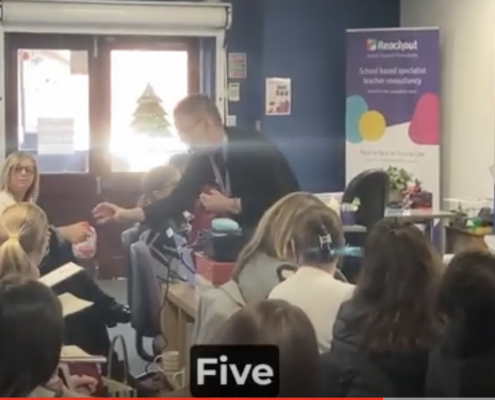

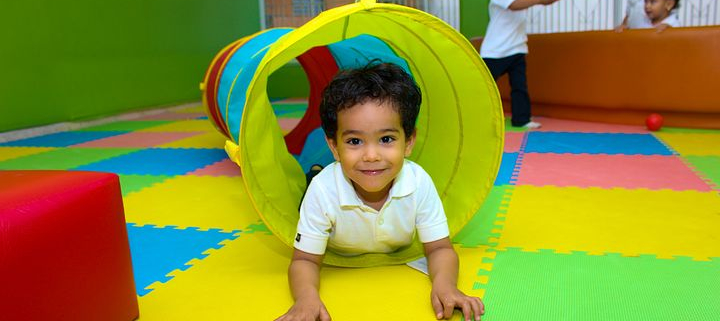 pixabay.com
pixabay.com